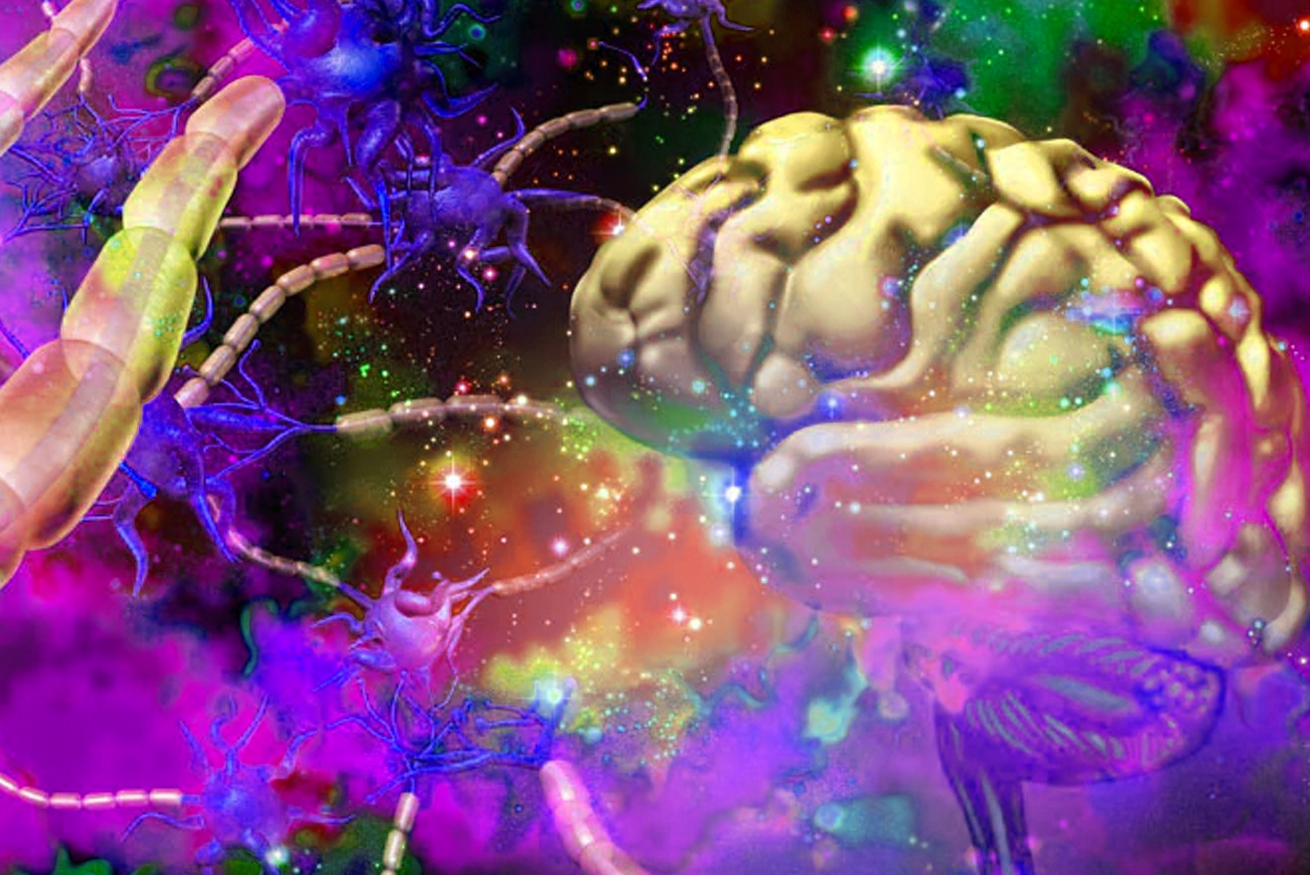
If you’ve ever studied psychedelic pharmacology you know that psychedelics target serotonin receptors, particularly the 5-HT2A receptor. But what is less well known is what a serotonin receptor actually looks like, and how a psychedelic molecule binds with the receptor shape. Fortunately, researchers have recently developed a virtual reality simulation to zoom into a serotonin receptor and view psychedelic binding in precise detail.
In this recent video from Nanome, Dr. Asher Brandt, Professor of Biochemistry at the Saint Joseph University, Connecticut, discusses a recently published paper about how Single Nucleotide Polymorphisms, (SNPs, pronounced “snips”) might alter the pharmacological signaling of potentially therapeutic psychedelics. To demonstrate how these mutations might affect psychedelic receptor binding, we jump into a VR simulation of a 5-HT2A receptor.
In this video, a 5-HT2A receptor is generated in a VR workspace, and using augmented reality techniques the researchers are able to manipulate the receptor in real time to show how various mutations might affect receptor binding at the molecular level. Towards the end of the video (around the 13:30 mark) we are shown a space filling model of the psilocin molecule (the byproduct of ingesting psilocybin mushrooms) nested in the pocket of the receptor indicating exactly how it binds to the larger receptor superstructure.
If you have ever wondered how psychedelic molecules bind to receptors, this video answers that question.
According to the video description, “SNPs are the most common type of genetic variation among people. Specifically, it’s a genomic variant at a single base position in the DNA, which can lead to a single point amino acid mutation in the subsequently synthesized protein.”
It continues, “In the study, the authors examined whether sequence variations in the 5-HT2A receptor gene affect the signaling of some of the most used psychedelic drugs such as LSD, mescaline, psilocybin. They examined the in vitro pharmacology of seven non-synonymous SNPs, which give rise to a variant of 5-HT2A serotonin receptors. What they found is that these non-synonymous SNPs exert statistically significant effects on not just the efficacy but also the potency of four therapeutically relevant psychedelics.”
Having studied psychedelic pharmacology for over 30 years I am constantly amazed at how technology has allowed us to drill down into the details of receptor binding. In just a few short decades we’ve gone from “nobody knows how this works” to “this is how it works for people with every known 5-HT2A gene mutation.”
This paper is another piece of evidence in the growing body of work that indicates that psychedelics have differing effects and potency on people depending on their genetic profile. This revelation has led to the creation of genetic testing kits that can tell you exactly what your receptor profile looks like, and predict how you might react to psychedelic therapy.





